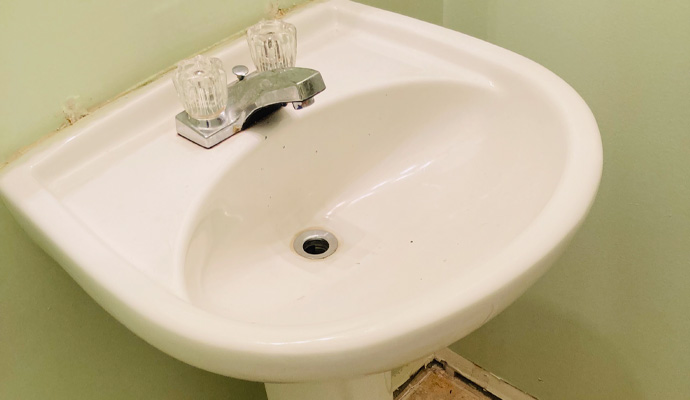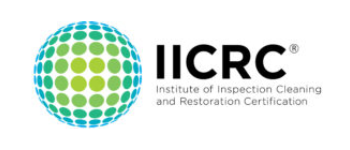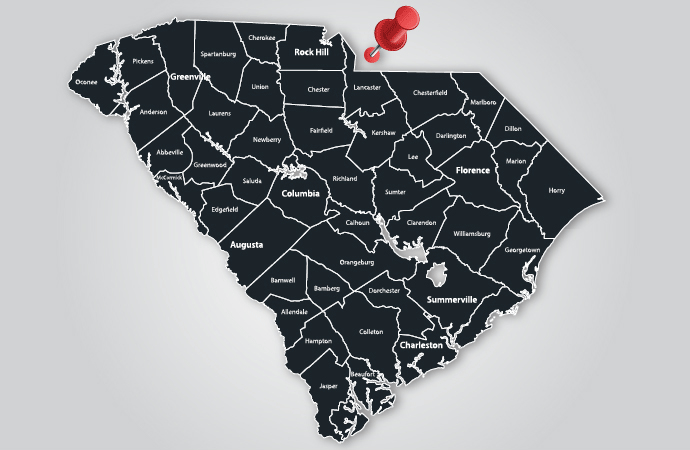Leaky Faucets and Fixtures: A Comprehensive Guide to Repair and Water Damage Mitigation
Leaky faucets and fixtures are common household problems that can lead to water damage if not addressed promptly. In this comprehensive guide, we will explore the causes of leaky faucets, step-by-step repair guides for different types of faucets, the importance of timely repair to prevent water damage, tips for water damage mitigation, the link between leaky faucets and water damage, types of water damage and cleanup methods, the impact of water damage on home insurance, and preventive measures to avoid water damage.
- Common Causes of Leaky Faucets and Fixtures
- Repairing Damage from a Leaky Faucet: Step-by-Step Guide
- Importance of Timely Repair to Prevent Water Damage
- Water Damage Mitigation: FAQ and Tips
- The Link Between Leaky Faucets and Water Damage
- Types of Water Damage and Cleanup Methods
- Hidden Leaks and Detecting Water Damage
- Preventive Measures for Water Damage
- Conclusion: Safeguard Your Home from Water Damage

Common Causes of Leaky Faucets and Fixtures
Leaky faucets can be caused by various factors, including [worn-out washers or gaskets] How to Fix a Leaky Faucet, loose O-rings, and corrosion in the valve seat. Damaged or deteriorated faucet parts, such as those found in bathroom, shower, and kitchen faucets, can also lead to leaks. Identifying the source of the leak is the first step in repairing a leaky faucet.
One common cause of leaky faucets is a worn-out washer or gasket. Over time, the constant turning of the faucet handle can cause the washer or gasket to deteriorate, resulting in a leak. Another common cause is a loose O-ring, which is a small rubber ring that helps create a watertight seal between two parts of the faucet. If the O-ring becomes loose or damaged, water can leak out. Corrosion in the valve seat can also cause leaks. The valve seat is the connection point between the faucet and the spout. If it becomes corroded or worn down, it can cause water to leak from the base of the faucet.
For example, let's consider a bathroom faucet that is leaking from the base. Upon inspection, you may find that the valve seat has corroded due to prolonged exposure to water and minerals. This corrosion creates a gap that allows water to leak out. By identifying the specific cause of the leak, you can proceed with the appropriate repair method.
Repairing Damage from a Leaky Faucet: Step-by-Step Guide
Repairing a leaky faucet can be a relatively simple DIY task. The repair method will depend on the type of faucet you have. Here are step-by-step guides for different types of faucets:
Cartridge faucets can be fixed easily and inexpensively. Remove the handle, replace O-rings, and match the replacement cartridge length and stem end.
- Compression faucets: Remove the handle, packing nut, and stem, replace the seat washer and O-ring, and smooth out the seat if damaged.
- Ceramic-disk faucets: Remove the handle, escutcheon cap, and disk cylinder, replace the neoprene seals, clean the cylinder openings, and reassemble.
- Ball-type faucets: Remove the handle, cap, collar, faucet cam, rubber seats, and springs, replace the seats and springs, reinstall the stainless-steel ball, rubber gasket, and cam cap, and tighten the top cap assembly with a spanner wrench.
For single-handle faucets, disassemble the faucet and replace any damaged parts to fix the leak. It's important to turn off the water supply before starting any repairs.
In addition to these specific repair steps, it's important to note that having the right tools for the job is crucial. A basic toolkit with a wrench, screwdriver, and pliers will often be sufficient for most faucet repairs. It's also a good idea to have replacement parts on hand in case they are needed during the repair process.
For instance, let's say you have a compression faucet in your kitchen that is leaking. You follow the step-by-step guide and find that the seat washer is worn out. By replacing the seat washer and ensuring that all other components are in good condition, you can successfully repair the leak and prevent further water damage.
Importance of Timely Repair to Prevent Water Damage
Timely repair of leaky faucets is crucial to prevent water damage in your home. Ignoring a leaky faucet can lead to rot, rust, mold, swelling, discoloration, and delamination. The longer a leak goes unrepaired, the greater the risk of these types of damage occurring. Additionally, a leaky faucet can waste a significant amount of water over time, which not only impacts your water bill but also puts unnecessary strain on the environment.
Water damage can have serious consequences for both the structure and safety of your home. It can weaken the foundation, cause structural damage to walls and floors, and promote the growth of mold and mildew. This can lead to costly repairs and potential health hazards for you and your family. By addressing the issue promptly, you can save on costs and prevent further damage.
For example, let's say you have a leaky faucet in your bathroom. If left unrepaired, the constant dripping of water can lead to the growth of mold and mildew, which thrive in damp environments. This can not only damage the surfaces and materials in your bathroom but also pose health risks to those living in the home. By fixing the leaky faucet and ensuring that any water damage is properly cleaned up, you can protect your home and the health of your family.
Water Damage Mitigation: FAQ and Tips
To mitigate water damage, it's important to be proactive. Here are some frequently asked questions and tips for water damage mitigation:
Monitor water bills and inspect toilets, sinks, and tubs for signs of leaks.
Install water leak detectors for early detection and consider professional inspections for water heaters and air conditioners.
In addition to these tips, it's important to address any water damage as soon as it occurs. This may involve removing standing water, drying out affected areas, and using dehumidifiers to prevent the growth of mold and mildew. It's also important to consider the source of the water damage. If it is due to a leaky faucet or fixture, make sure to repair it promptly to prevent further damage.
For instance, let's say you have a basement that is prone to flooding. By regularly checking your sump pump for any issues and installing a water leak detector, you can detect and address potential water damage before it becomes a major problem. Additionally, scheduling regular inspections for your water heater and air conditioner can help identify any leaks or malfunctions that could lead to water damage.
The Link Between Leaky Faucets and Water Damage
Leaky faucets can cause damage to surfaces and plumbing lines if not promptly repaired. Water damage can lead to rot, rust, mold, and other issues. If left unchecked, a leaky faucet can result in water pooling on surfaces, seeping into walls and floors, and causing damage to the surrounding materials. This can weaken the structural integrity of your home and create an environment conducive to the growth of mold and mildew.
For example, let's say you have a leaky faucet in your kitchen that is causing water to drip onto the countertop. Over time, the constant moisture can lead to the growth of mold and mildew, which can not only damage the countertop but also pose health risks. By repairing the leaky faucet as soon as it is detected, you can prevent these types of water damage issues.
Types of Water Damage and Cleanup Methods
Water damage is categorized into clean water, gray water, and black water, each requiring different cleanup methods. Clean water comes from a sanitary source and poses no substantial risk, while gray water is contaminated and may cause discomfort or illness. Black water is grossly contaminated and may contain hazardous substances. When dealing with water damage, it's important to assess the category of the water and take appropriate cleanup measures.
For clean water damage, the cleanup process typically involves removing any standing water, drying out the affected area, and thoroughly cleaning and disinfecting surfaces. This may include using fans, dehumidifiers, and specialized cleaning products.
Gray water damage requires additional precautions due to the potential presence of contaminants. In addition to the steps taken for clean water damage, it may be necessary to wear protective gear, such as gloves and masks, and to thoroughly disinfect affected areas.
Black water damage is the most severe category and often requires professional assistance. Cleanup methods for black water damage typically involve the use of specialized equipment and techniques to safely remove and dispose of the contaminated materials.
For instance, let's say you experience a flood in your home that results in water damage. If the water is clean and does not pose any health risks, you can start the cleanup process by removing the standing water, drying out the affected areas, and thoroughly cleaning and disinfecting surfaces. However, if the water is contaminated or grossly contaminated, it is important to seek professional help to ensure proper cleanup and disposal of the affected materials.
The Impact of Water Damage on Home Insurance
Water damage is a common cause of home insurance claims. Homeowners insurance covers certain types of water damage, but not all. It's important to review your insurance policy to understand the coverage for water damage. Some policies may cover water damage caused by sudden and accidental events, such as a burst pipe or an overflowing washing machine. However, damage caused by gradual issues, such as a leaky faucet, may not be covered.
To ensure that you have adequate coverage for water damage, it's a good idea to consult with your insurance provider and consider adding additional coverage if necessary. Additionally, documenting any repairs or mitigation measures taken can help support your insurance claim in the event of water damage.
For example, let's say you experience water damage in your basement due to a burst pipe. You file an insurance claim and provide documentation of the repairs and mitigation measures taken to prevent further damage. This documentation can support your claim and increase the likelihood of receiving coverage for the damage.
Hidden Leaks and Detecting Water Damage
Hidden leaks can cause significant damage if left undetected. Dripping sounds, increased water bills, and signs of water damage can indicate hidden leaks. It's important to regularly inspect your home for any signs of water damage, even in areas that are not immediately visible. This may include checking for dampness or discoloration on walls, ceilings, and floors, as well as looking for any unusual odors or mold growth.
In some cases, specialized equipment may be necessary to detect hidden leaks. This can include thermal imaging cameras or moisture meters, which can identify areas of increased moisture that may indicate a hidden leak. If you suspect a hidden leak or notice any signs of water damage, it's important to address the issue promptly to prevent further damage.
For instance, let's say you notice a musty odor in your basement but cannot find any visible signs of water damage. By using a moisture meter, you can identify areas of increased moisture that may indicate a hidden leak. This allows you to take immediate action and prevent further damage to your home.
Preventive Measures for Water Damage
Taking preventive measures can help avoid water damage in your home. Regular maintenance of faucets, toilets, sinks, and tubs can prevent water damage. Proper insulation and regular gutter cleaning are also essential to avoid frozen pipes and water damage. It's important to address any leaks or signs of water damage as soon as they are detected to prevent further issues.
One specific preventive measure is the installation of a water leak detection system. These systems use sensors to detect water leaks and can automatically shut off the water supply to prevent further damage. They can be particularly useful for detecting leaks in areas that are not frequently accessed, such as basements or utility rooms.
Regular inspections of your plumbing system can also help identify any potential issues before they become major problems. This may include checking for signs of corrosion or deterioration in pipes, as well as ensuring that all connections and fittings are secure.
In addition, proper insulation and regular maintenance of your home's exterior can help prevent water damage. By ensuring that your home is properly sealed and that gutters are clear of debris, you can reduce the risk of water infiltration and damage.
Conclusion: Safeguard Your Home from Water Damage
Addressing leaky faucets and fixtures promptly is essential to prevent water damage in your home. By following the step-by-step repair guides, implementing preventive measures, and being proactive in detecting and addressing water damage, you can safeguard your home and avoid costly repairs. If you experience water damage, it's important to seek professional help for restoration. Kingsley Water Damage & Fire Cleanup specializes in addressing water damage and offers expertise in restoration protocols and technology. With their assistance, you can restore your home to its pre-damage condition and take steps to prevent future water damage. Remember, when it comes to leaky faucets and fixtures, a little prevention and timely repair can go a long way in protecting your home and ensuring your peace of mind.





